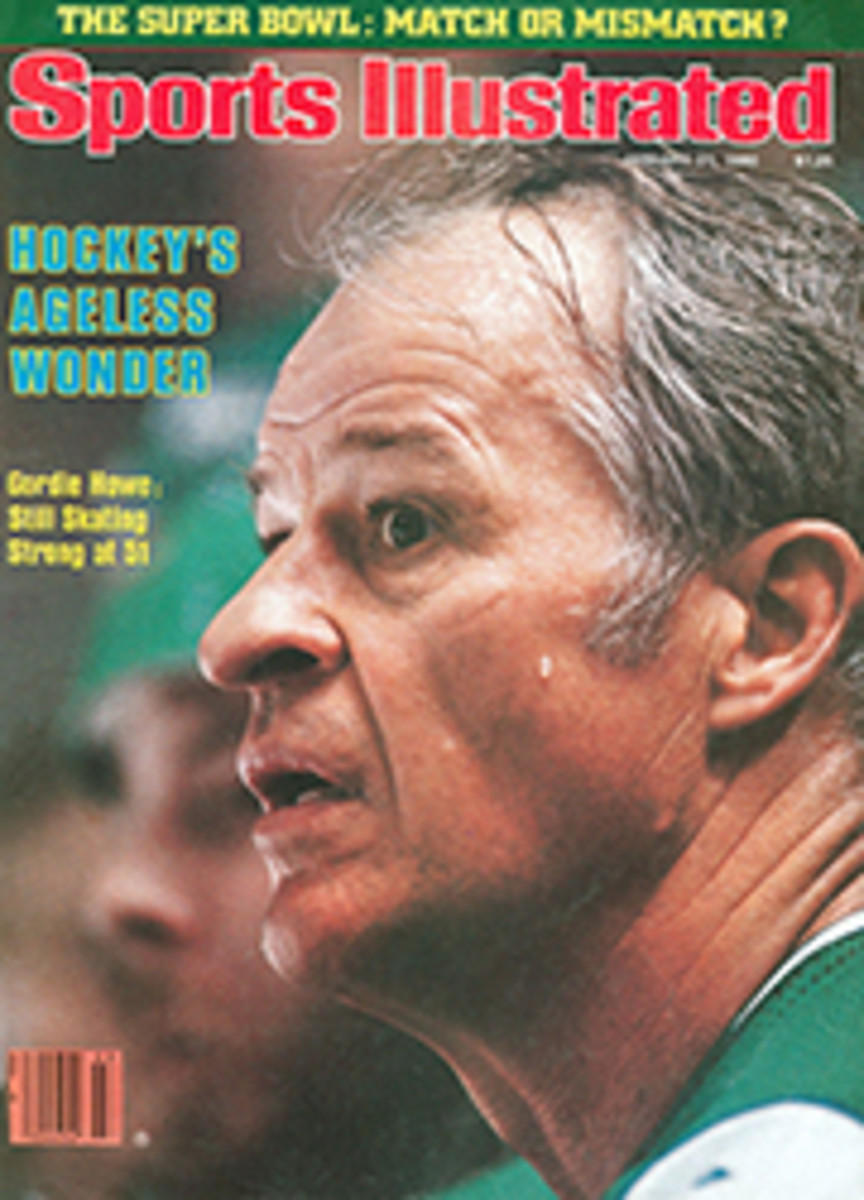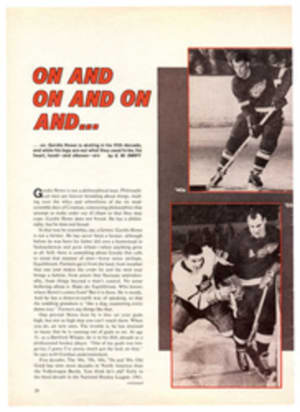
THE SHOT HEARD 'ROUND THE LINKS
There's a precious brouhaha afoot on the fairways and greens that is putting a little spice into the new TV golf season. The commotion is not among the golfers, who would benefit by stirring up a little attention, but among the networks. The air has been filled with statements, counterstatements and so many interpretations of golf ratings that the situation conjures up the Benjamin Disraeli line, "There are three kinds of lies: lies, damned lies and statistics."
Some of the arguments:
•Golf is in trouble on television vs. golf is in no more trouble than any other sport in the eyes of sponsors.
•Golf ratings are down vs. golf ratings are not down vs. they are not down by any more than other sports.
•ABC televises golf better than CBS vs. CBS is better than ABC vs. all three networks televise the sport relatively well vs. how many viewers can tell the difference, anyway?
The first shot was fired by ABC director Terry Jastrow last summer . when he bemoaned the state of golf on television. Jastrow, 31, a former college golfer at Houston, directs ABC's U.S. Open telecasts; he also is trying to carve out a career as an actor. "Golf on TV, if it is done as poorly as it is now being done by the other networks, can seriously damage the game," Jastrow said. "Our skirts aren't clean at ABC, but CBS hasn't essentially changed its static approach in 15 years, and NBC is just third-rate in all respects."
Those comments were particularly galling to the people at CBS, where Frank Chirkinian, 53, has been the majordomo of golf production for more than two decades. Said Jastrow, "Chirkinian is as good as anyone if the event is good and close, with key players in contention. My problem with his coverage is that if the event is not close, no effort is made to present it any other way. If the game is boring, CBS will show it boring." ABC, he said, tries to liven up a dull tournament by doing interviews with players, caddies, wives and kids—what the network calls, in the immortal phrase coined by Roone Arledge, the president of ABC Sports, "up close and personal."
Chirkinian responded, "The guys who want to run sidebars want to subjugate the event to their own egos. How do you humanize a player in 40 seconds? At CBS we report the event first and then make it entertaining. Remember, simplicity in itself is an art."
NBC Executive Producer Don Ohlmeyer identified Chirkinian as the best director doing golf and said, "I find repugnant the sheer egotism that would allow Jastrow to set himself up as the determining factor for what is good and bad in coverage. Maybe they should set up a course at the New School with Jastrow lecturing on how to televise golf; I would take it if the tuition wasn't more than $2."
The debate over how TV coverage should be handled has now expanded to encompass broader concerns about the sport and TV. On top of a dip in the composite golf ratings on all three networks from 7.4 in 1975 to 5.4 in 1979, there was an ominous development last October: the decision by Chevrolet to cut its involvement, to the tune of some $12 million, as a major sponsor of the PGA on CBS.
Insiders suggest that all this is part of a pattern—that interest in golf is on the wane—but Deane Beman, the PGA tour commissioner, disagrees. He notes that the ratings for his events did not go down last year from 1978, when the figure was also 5.4. And he points to TV factors that played a part in the decrease in ratings since 1975.
When ABC regularly telecast PGA events, its highly rated Wide World of Sports show provided a big lead-in audience for golf. But when ABC dropped PGA golf after 1978 (retaining the U.S. Open, PGA Championship and British Open), some of the tournaments that moved to CBS and NBC suffered in the ratings because they had to go up against Wide World. In addition, ABC golf telecasts had occupied a "ratings-desirable" later time slot because ABC Sports had control of the network until 7 p.m. EST; NBC and CBS must yield to the news at 6 p.m. and, thus, program golf at less desirable earlier times. Also, bad weather in the Northeast and Midwest raises the early-season golf ratings, and last winter it was relatively mild in those areas.
Curiously, despite Jastrow's comments about ABC superiority, ABC's ratings for the U.S. Open and the PGA fell off most of all, the Open dropping from a 5.8 in 1978 to a 5.3—"less than the rating we got for our Western Open telecast," says Chirkinian gleefully.
For the new golf season that started with the NBC telecast of the Bob Hope Desert Classic last weekend (page 84), both NBC and CBS are adding innovations. NBC is putting in a third roving camera to bolster its close-up coverage from behind the golfers and doing profiles of 10 of the top young pros to enhance their fan appeal. CBS is adding a sports-magazine segment at the opening of each telecast that will include player profiles and reports on the tour. Both networks will feature the PGA's new round-by-round statistics in eight categories—driving distance, birdie percentage, eagle and birdie leaders, etc.—which Beman says should spotlight golfers' strengths and give them public identity.
If all this looks like a response to Jastrow's criticisms, Chirkinian counters that it is a natural outgrowth of the current golf situation, in which there is a need to play up the new names that dot the leader board almost every week. "When Mr. Jastrow makes up his mind whether he's a part-time actor in beer commercials or a bona fide production entity in television," says Chirkinian, "then I'll listen to what he has to say."
TWO PHOTOS
JASTROW'S DIATRIBE WAS NO LAUGHING MATTER TO CHIRKINIAN

